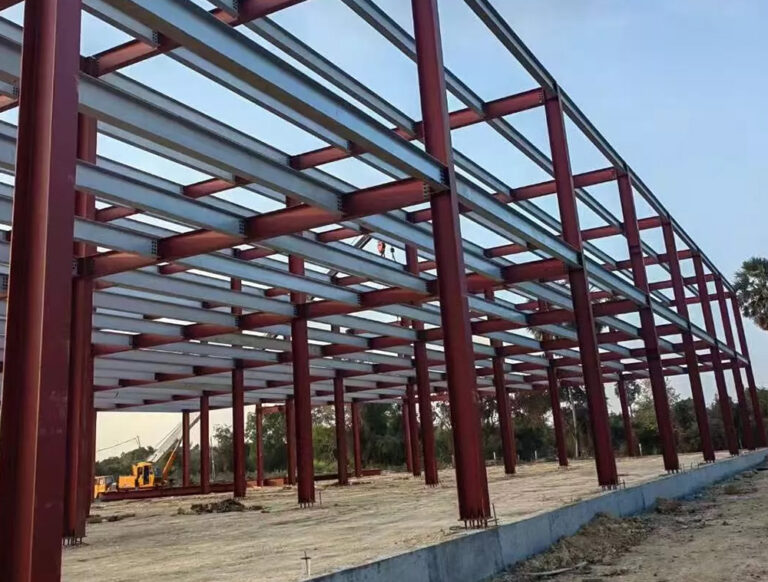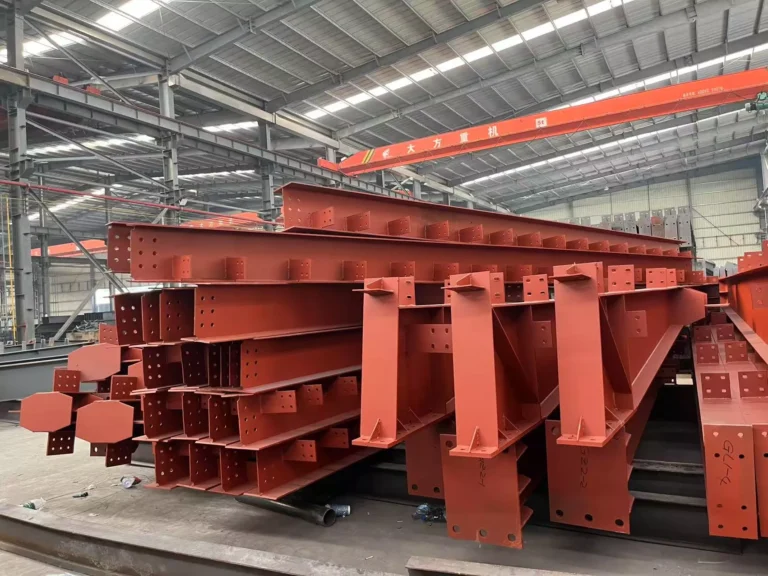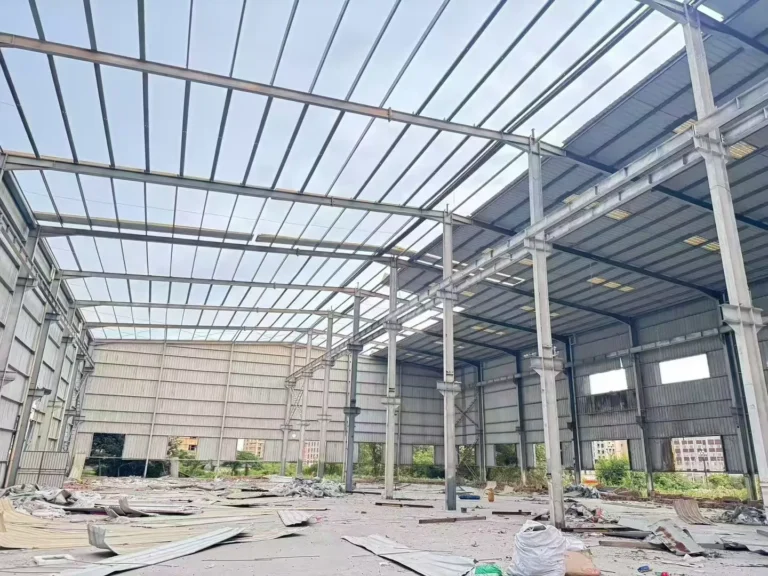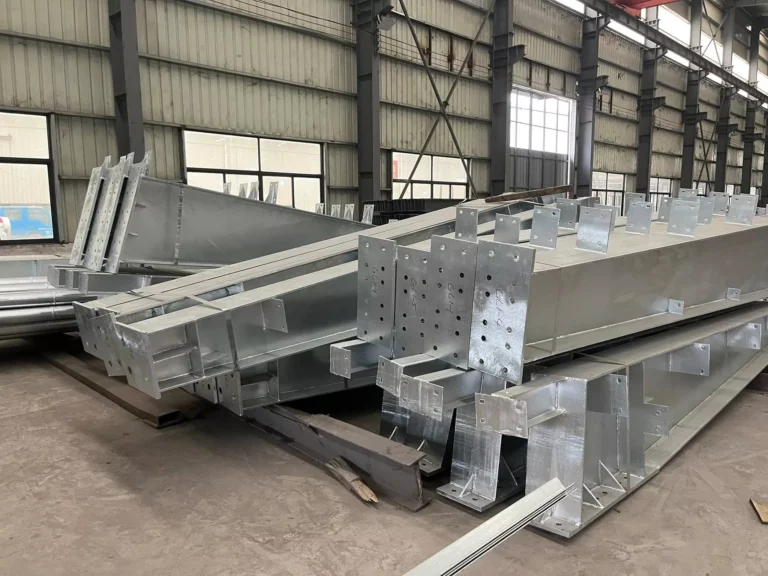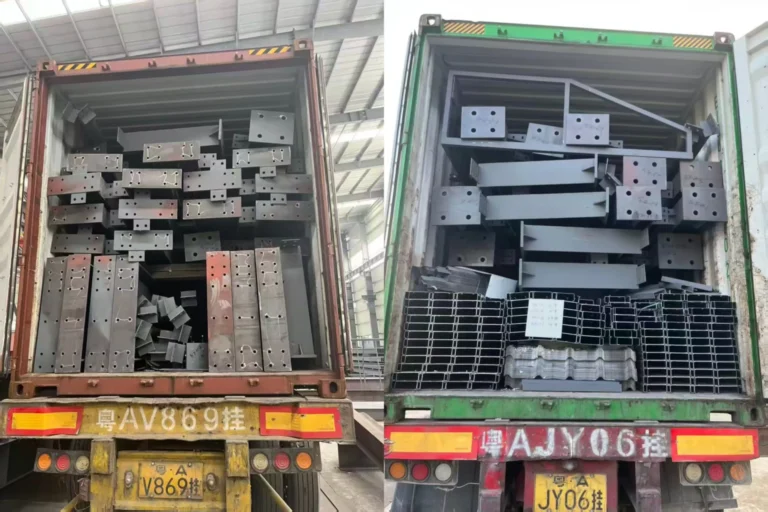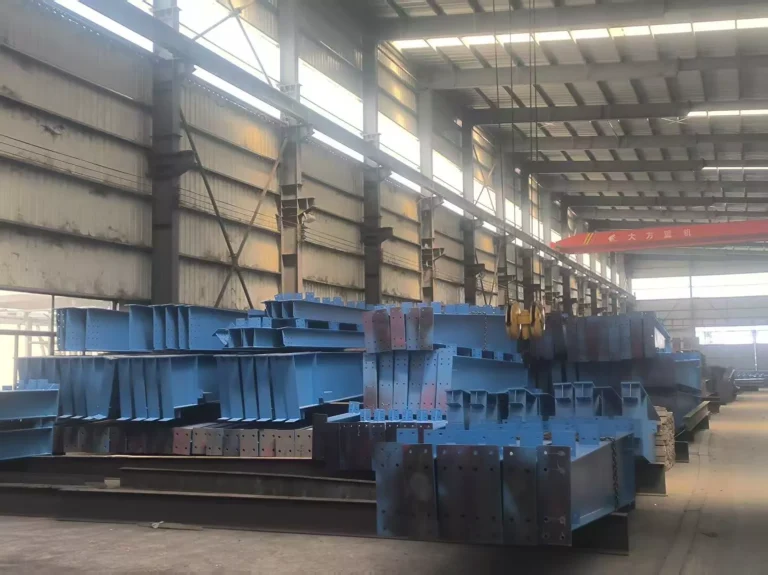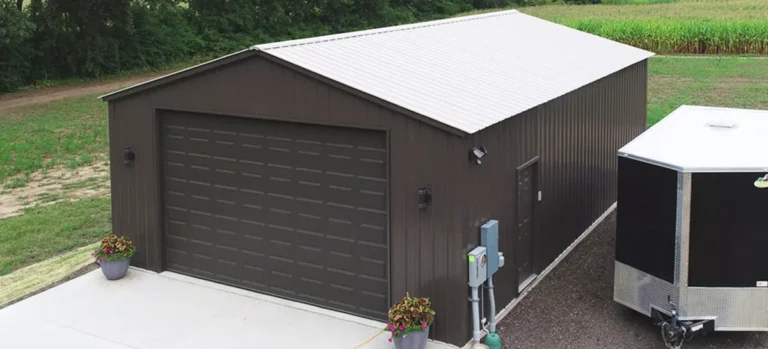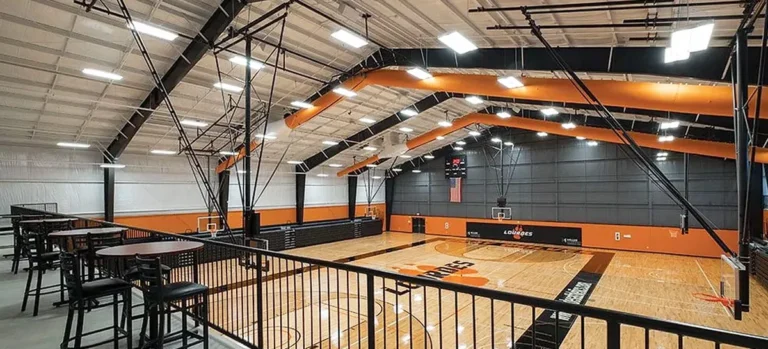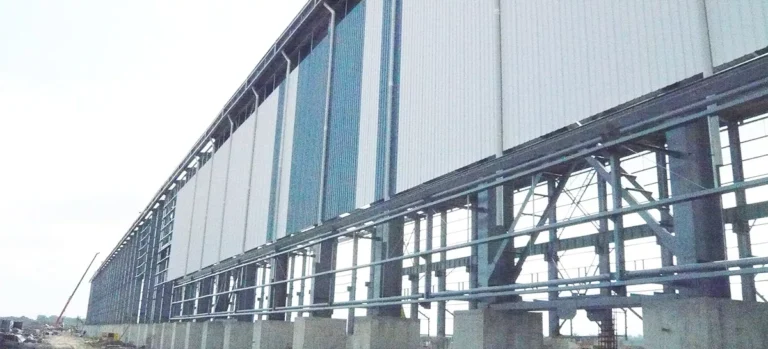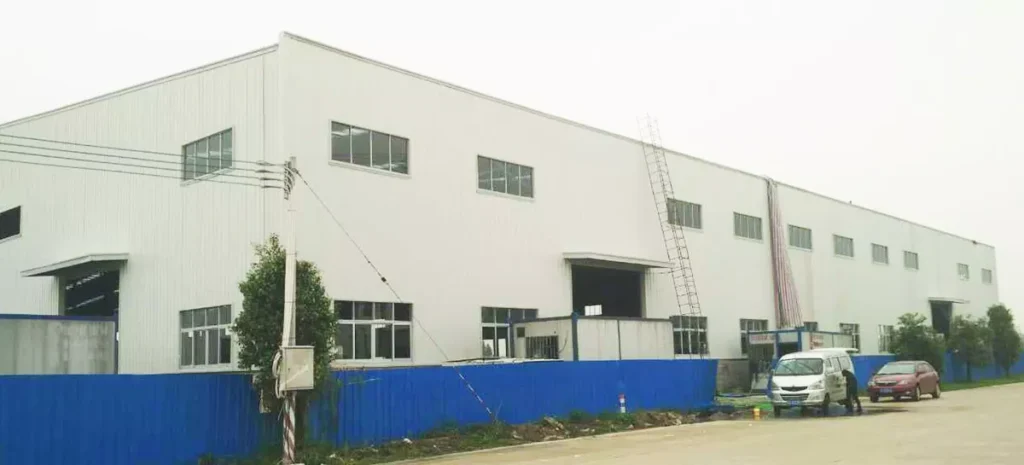
As businesses and industries continue to prioritize sustainability and environmentally conscious practices, the demand for eco-friendly construction materials and methods has risen significantly. Steel structure buildings, renowned for their strength and versatility, are emerging as one of the most sustainable options available in construction. In this article, we explore the environmental benefits of steel structure buildings and why they should be considered a top choice for eco-conscious projects.
1. Steel is 100% Recyclable
One of the primary environmental advantages of steel is its recyclability. Unlike many other building materials, steel is 100% recyclable, which means it can be reused and repurposed indefinitely without losing its quality or strength. In fact, a significant portion of the steel used in construction today is made from recycled steel.
Using recycled steel reduces the need for raw material extraction, which helps conserve natural resources such as iron ore, coal, and limestone. It also minimizes the environmental impact associated with mining, which can lead to habitat destruction and pollution. This cycle of recycling significantly lowers the carbon footprint of steel production.
At Ganyo Steel Structure, we source and manufacture steel structures that contribute to a circular economy, ensuring that the steel used in construction can be recycled and reused at the end of its lifespan.
2. Long Lifespan and Durability
Steel is known for its durability and resistance to the elements, including fire, pests, and extreme weather conditions. Steel structures require minimal maintenance over their lifespan, reducing the need for frequent repairs or replacements that consume additional resources and energy.
Due to its exceptional strength and longevity, a steel building can stand the test of time for several decades without significant degradation. This longevity minimizes the environmental impact over the life of the building, as fewer materials are needed for repairs or demolition.
3. Energy Efficiency Benefits
Steel structure buildings can be designed to be highly energy-efficient, contributing to a reduction in energy consumption. There are several ways in which steel buildings enhance energy efficiency:
- Insulation: Steel buildings can be easily insulated to meet high energy standards. Insulation materials like fiberglass, spray foam, and polyisocyanurate can be incorporated into the walls and roof, minimizing heat loss in winter and reducing the need for air conditioning in summer. Proper insulation helps lower energy consumption and reduces the building’s carbon footprint.
- Reflective Coatings: Steel roofs can be coated with reflective materials that minimize heat absorption from the sun, a process known as cool roofing. This can significantly reduce the amount of energy required to cool the building during hot months, lowering HVAC costs and overall energy consumption.
- Natural Lighting: Steel structures can be designed with large windows or skylights to maximize the use of natural light, reducing reliance on artificial lighting during the day. This not only cuts down on electricity consumption but also provides healthier lighting conditions for occupants.
By incorporating energy-efficient features, steel structure buildings help reduce operating costs and minimize their environmental impact.
4. Reduction in Construction Waste
Steel construction is highly precise and efficient, leading to a significant reduction in construction waste. Steel components are prefabricated in controlled factory environments, ensuring that materials are used efficiently, and waste is minimized. Unlike traditional construction methods, where materials are cut and modified on-site, steel fabrication allows for better control over material use, reducing the amount of offcuts and scrap materials.
Moreover, steel components can be reused or repurposed in future projects, further reducing waste. If demolition is necessary at the end of a building’s life, the steel can be fully recycled, avoiding the need to send large amounts of waste to landfills.
5. Lower Carbon Emissions
While steel production traditionally has a higher carbon footprint compared to other materials, the industry is evolving. Modern steel production processes, such as electric arc furnaces (EAF), use recycled steel scrap and require significantly less energy than the traditional blast furnace method. The use of EAF reduces the amount of carbon dioxide emissions generated during production.
Additionally, since steel buildings last longer and require less maintenance than buildings made from other materials, their overall carbon footprint over their lifetime is lower. Steel’s recyclability and the reduction in the need for new raw materials also contribute to a decrease in emissions over the building’s lifecycle.
6. Sustainability in Construction and Design
Steel is not only environmentally friendly during its lifespan but also throughout the design and construction phases. The efficiency of prefabricated steel components means less construction time on-site, which reduces the energy consumption and carbon emissions associated with construction activities.
The flexibility of steel also makes it possible to design buildings that can be easily adapted or expanded without the need for demolition. This “adaptability” reduces the need for new construction, and the ability to modify the building rather than tear it down helps reduce the environmental impact of future projects.
7. Impact on Sustainable Development Goals (SDGs)
The environmental benefits of steel structure buildings align well with several United Nations Sustainable Development Goals (SDGs), particularly:
- Goal 9: Industry, Innovation, and Infrastructure – Steel structures contribute to the development of resilient infrastructure, promoting sustainable industrialization and innovation in the building sector.
- Goal 12: Responsible Consumption and Production – Steel’s recyclability and efficiency in production help promote sustainable consumption and production patterns.
- Goal 13: Climate Action – The energy efficiency and reduced carbon emissions of steel structures help combat climate change and reduce the carbon footprint of the building sector.
By choosing steel for your building project, you’re contributing to the achievement of these global sustainability goals.
8. The Role of Steel in Green Building Certifications
Steel structure buildings are often a preferred choice in the pursuit of green building certifications such as LEED (Leadership in Energy and Environmental Design) and BREEAM (Building Research Establishment Environmental Assessment Method). The material’s recyclability, energy efficiency, and long lifespan are all contributing factors in obtaining these certifications.
Incorporating sustainable features into your steel structure building, such as rainwater harvesting systems, energy-efficient insulation, and solar panels, can further enhance its environmental credentials and help achieve higher sustainability ratings.
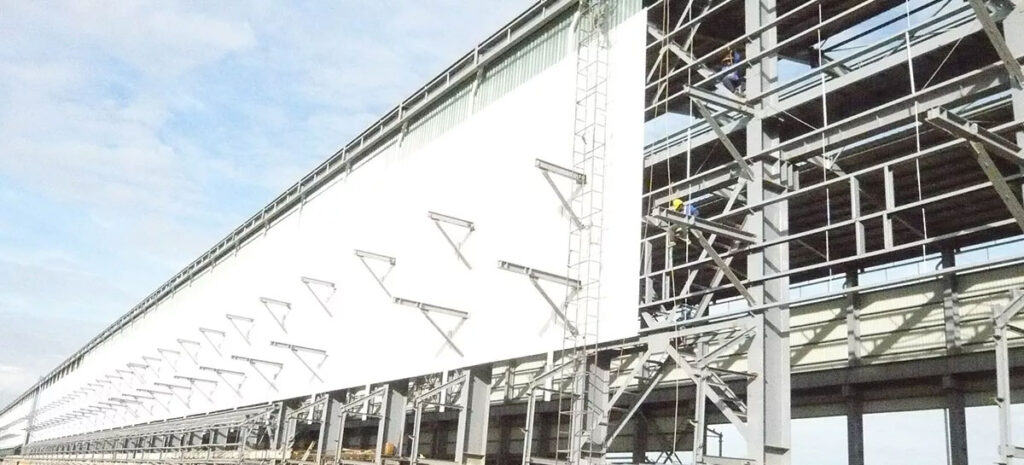
Conclusion
Steel structure buildings are among the most environmentally friendly options available in construction today. From their recyclability and energy efficiency to their long lifespan and reduced construction waste, steel offers significant environmental benefits. By choosing steel for your next building project, you’re not only making a durable and cost-effective investment but also contributing to a greener and more sustainable future.
At Ganyo Steel Structure, we specialize in providing eco-friendly steel building solutions that help reduce environmental impact without compromising on quality or performance. Contact us today at lizzy@ganyosteelbuilding.com to learn more about how our steel structure buildings can contribute to your sustainability goals.

